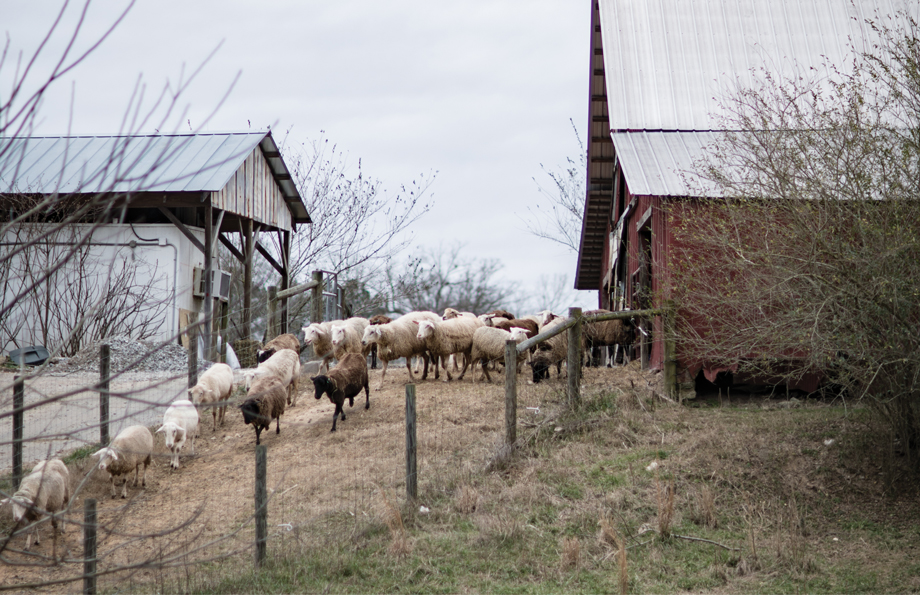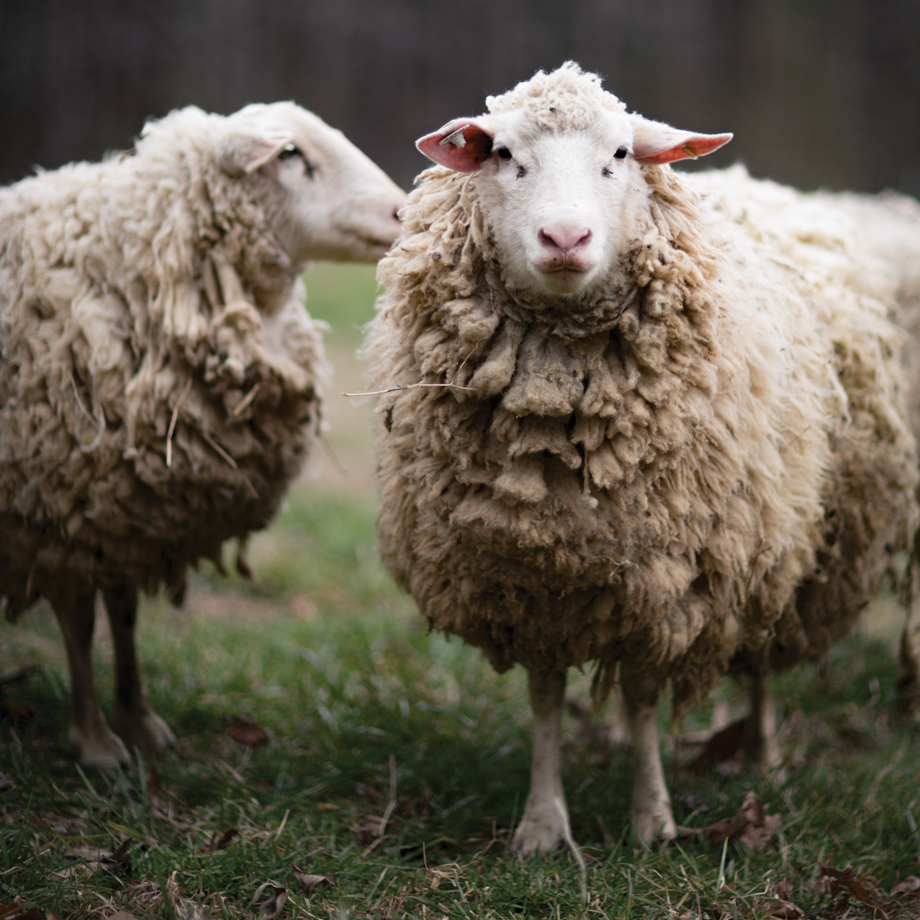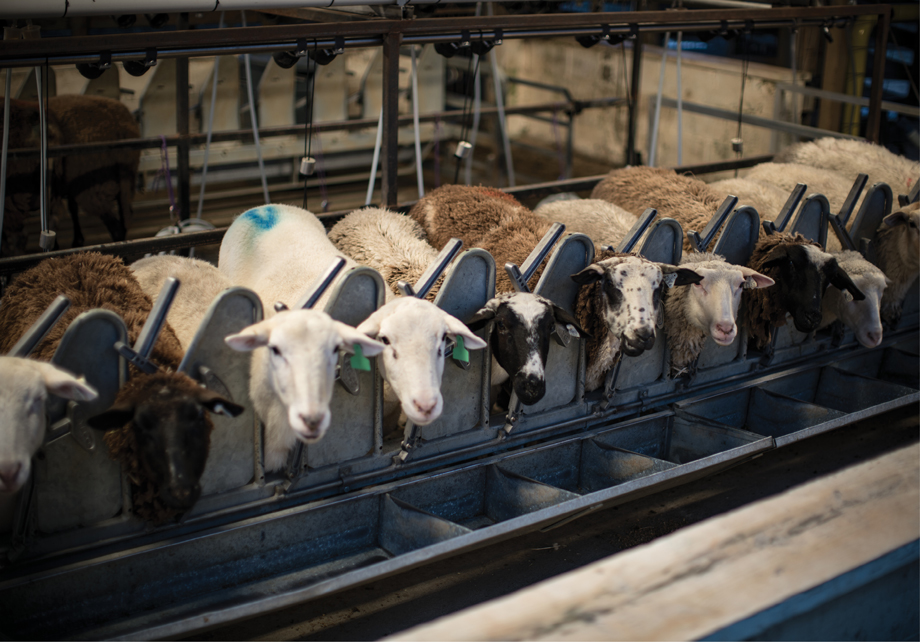TagsChattahoochee HillscheesecreameryMany Fold FarmRebecca WilliamsRoss Williamssheep
Home Behind the scenes at Many Fold Farm
The food lovers guide to cheese in Atlanta
Behind the scenes at Many Fold Farm
This couple had some little lambs. Their cheese was freaking delicious.

 Driving south from the city on I-85, past Hartsfield-Jackson Atlanta International Airport along South Fulton Parkway, the billboards soon give way to rolling hills, and eight lanes of traffic narrow to two. In less than an hour, you’ll reach Chattahoochee Hills, where Rebecca and Ross Williams run Many Fold Farm, one of the region’s fastest-growing creameries. Farmers market devotees and high school sweethearts, the couple purchased the 145-acre property in the fall of 2009. “I was on track to get a PhD in English,” Rebecca says. “These poets I was reading were all encouraging me to get out in the world and live an engaged life. I decided that I could either do what they’re doing or do what they were telling me to do.” The only all-sheep creamery in Georgia struck gold last year at the American Cheese Society’s annual competition. Three of their cheeses—Garretts Ferry, Brebis, and Peekville Tomme—took home first-place ribbons, and a fourth, Condor’s Ruin, came in second. “In the cheese world,” says Rebecca, “that’s like winning an Oscar.”
Driving south from the city on I-85, past Hartsfield-Jackson Atlanta International Airport along South Fulton Parkway, the billboards soon give way to rolling hills, and eight lanes of traffic narrow to two. In less than an hour, you’ll reach Chattahoochee Hills, where Rebecca and Ross Williams run Many Fold Farm, one of the region’s fastest-growing creameries. Farmers market devotees and high school sweethearts, the couple purchased the 145-acre property in the fall of 2009. “I was on track to get a PhD in English,” Rebecca says. “These poets I was reading were all encouraging me to get out in the world and live an engaged life. I decided that I could either do what they’re doing or do what they were telling me to do.” The only all-sheep creamery in Georgia struck gold last year at the American Cheese Society’s annual competition. Three of their cheeses—Garretts Ferry, Brebis, and Peekville Tomme—took home first-place ribbons, and a fourth, Condor’s Ruin, came in second. “In the cheese world,” says Rebecca, “that’s like winning an Oscar.”

 Why Sheep?
Why Sheep?
“They’re the most efficient at turning grass into dollars,” Rebecca says. Sheep’s milk is high in protein, so one liter produces more cheese than the same volume of cow’s or goat’s milk. Sheep’s milk cheese also usually fetches a higher selling price per ounce because it’s more labor-intensive to produce. The farm is currently home to 145 sheep and 50 lambs, but they’re expanding the operation, bringing in another 70 sheep from a farm in Kentucky and expecting 100 more ewes by the end of birthing season. They hope to produce up to 20,000 pounds of cheese this year, nearly double what they made in 2015.
 How It’s Made
How It’s Made
After the milk is pasteurized and cooled, it’s mixed with culture and rennet. The cheese acidifies for up to 24 hours, solidifying into a curd. It’s ladled by hand into a mold, then salted. The young cheese is eventually moved to a series of temperature-controlled caves. When the rind has properly developed, the cheese is ready to be wrapped and shipped.

 The Milking Parlor
The Milking Parlor
Farm workers milk the sheep, two dozen at a time, using vacuum pumps at 5 a.m. and again at 5 p.m. “It’s the hardest job on this farm,” Rebecca says. “You’re dealing with the hindquarters of filthy animals and trying to keep them happy and calm, while also maintaining a high degree of sanitation. And you’re trying to move them through a system. You need to be methodical, and when you get out of a rhythm, it can be very challenging to get back into it.”
 Guardians
Guardians
Six dogs guard the flock from predators like coyotes and foxes. The oldest and longest-serving is six-year-old Oak, a fluffy Maremmas sheepdog who weighs 170 pounds. “This is going to be his last lambing,” Rebecca says. “Now that he’s older, it’s just too hot for him in the summer, so he’s going to go live at a farm down the road.”
 The Chicken Shack
The Chicken Shack
The farm is also home to 1,000 laying hens, whose fresh eggs go for $8 a dozen at farmers markets. Waste from the chickens fertilizes grassy fields, where sheep graze periodically.
Photographs by Andrea Fremiotti





![The North Carolina Museum of Natural Sciences’ newest exhibit is a [pre]historic first](https://cdn2.atlantamagazine.com/wp-content/uploads/sites/4/2024/04/DD-3-100x70.jpg)



